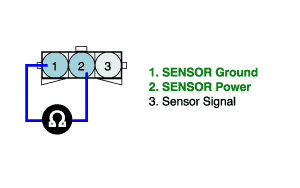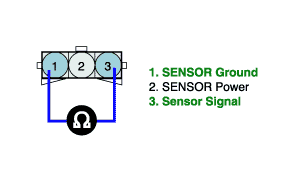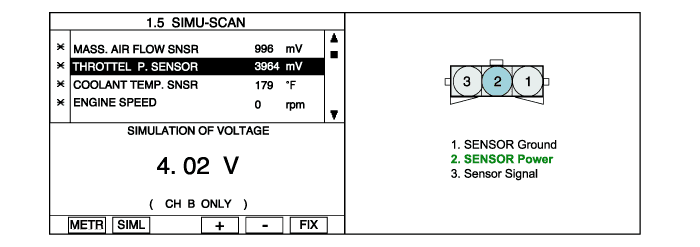Check TPS resistance
Ignition "OFF" & Engine "OFF"
Disconnect TPS connector.
Measure resistance between terminals 1 and 2 of the TPS connector.(to TP sensor side).
Specification : Approx. 3.5~6.5kΩ ( with throttle valve fully closed) at 20℃(68℉)

With still TPS connector disconnected, measure resistance between terminals 1 and 3 of the sensor connector(To sensor side).
Operate the throttle valve slowly from the idle position to the full open position and check the resistance changes smoothly in proportion with the throttle valve opening angle.
Specification : Resistance changes smoothly in proportion with the throttle valve opening angle.

Is the measured resistance within specification ?
YES
▶ Go to "Check PCM" as below.
NO
▶ Substitute with a known - good TPS and check for proper operation.
▶ If the problem is corrected, replace TPS and go to "Verification of Vehicle Repair" procedure.

